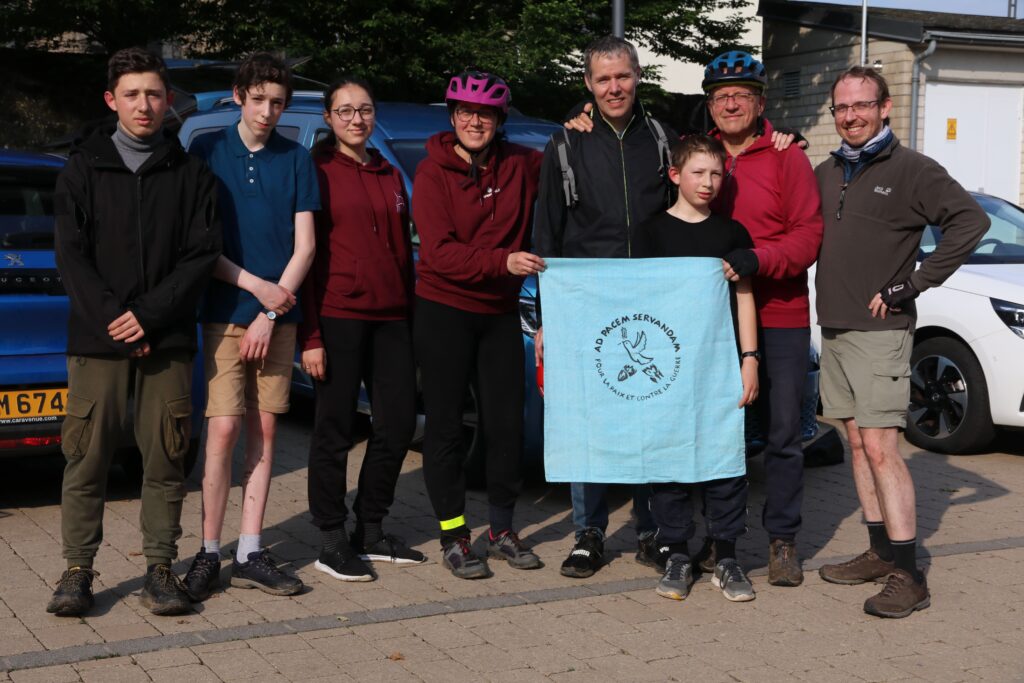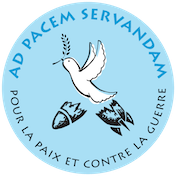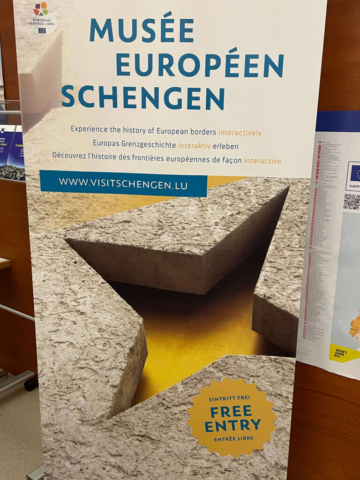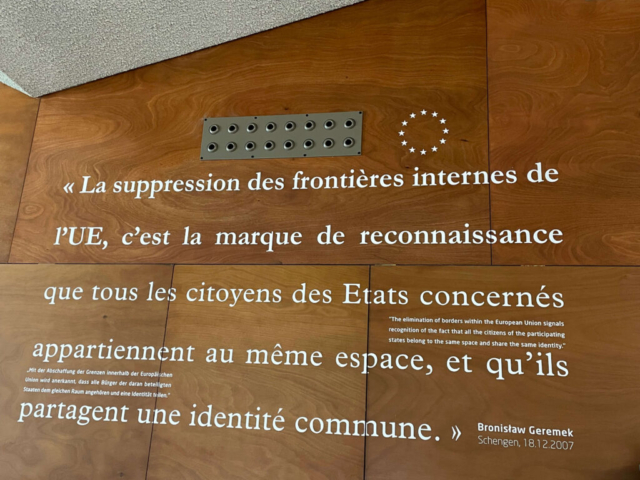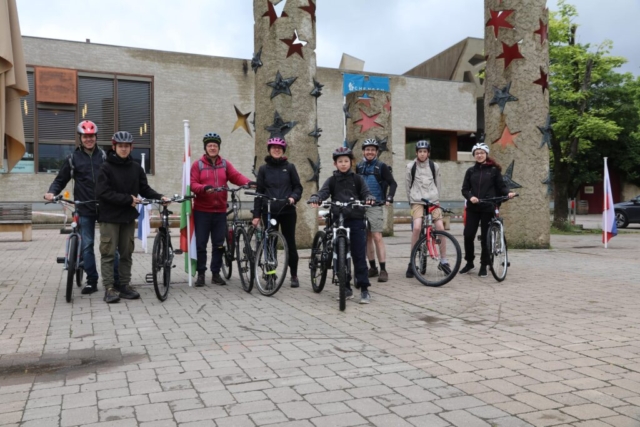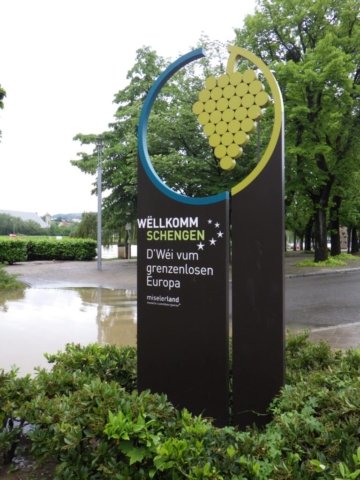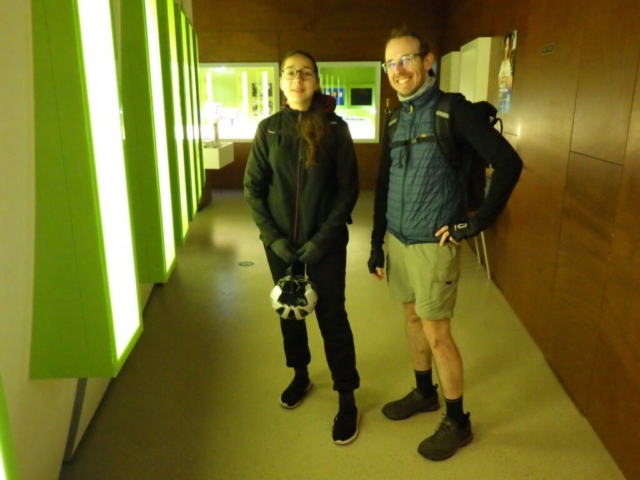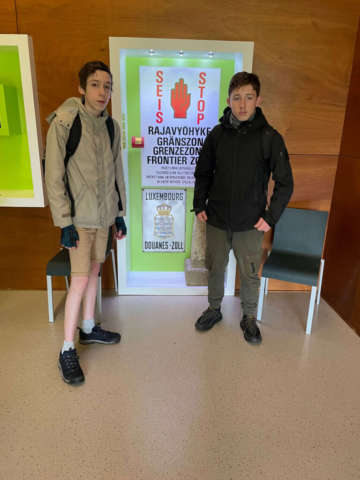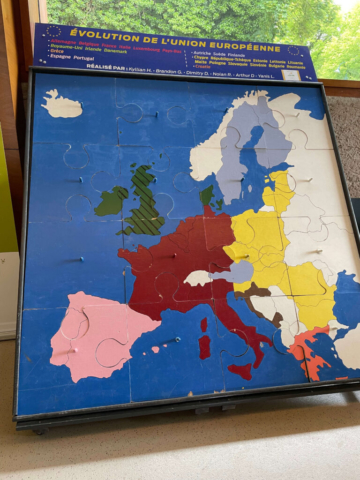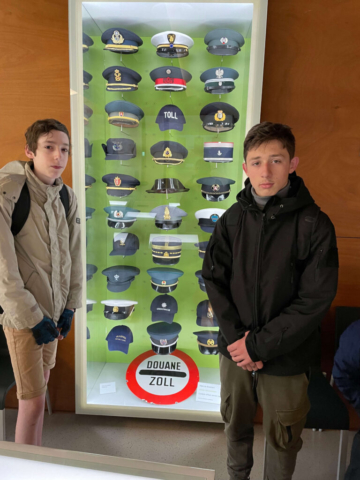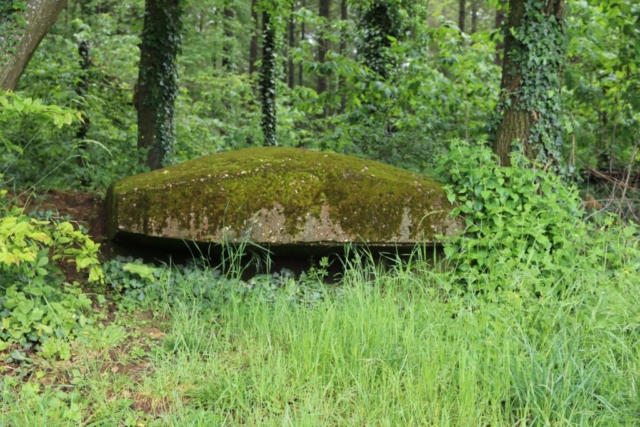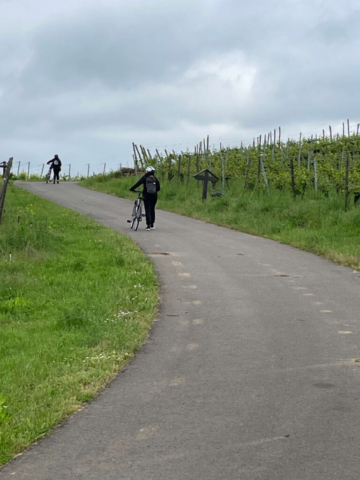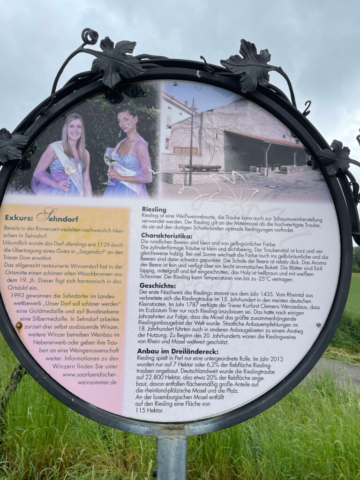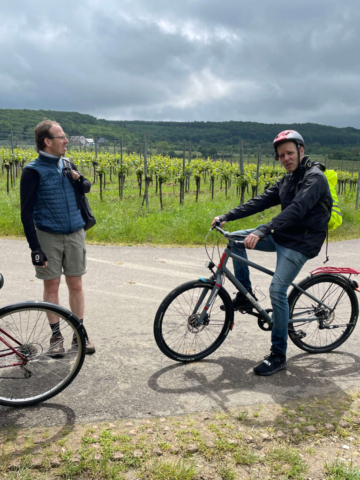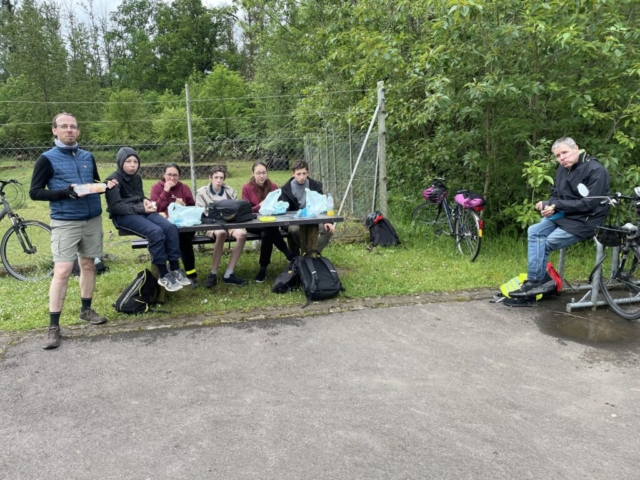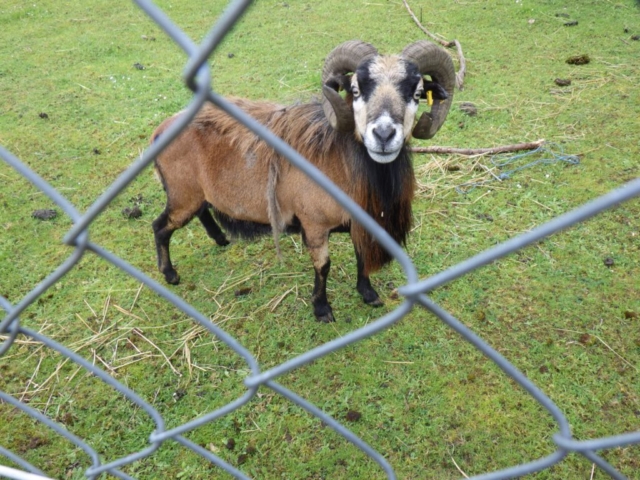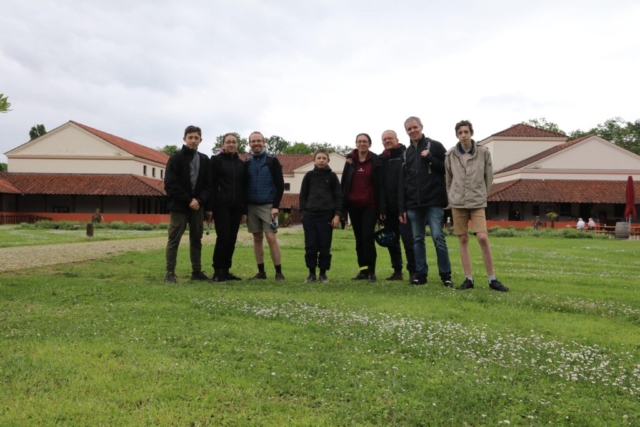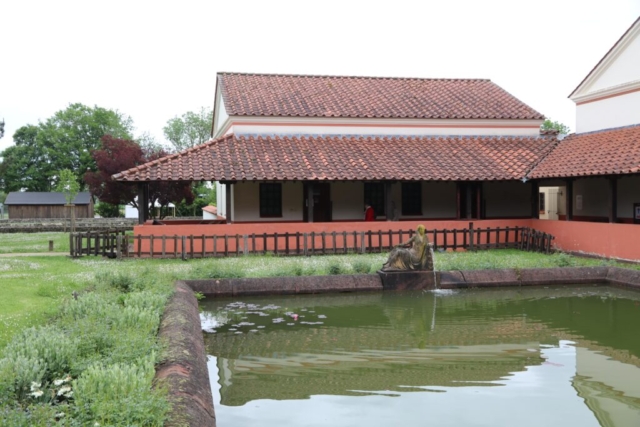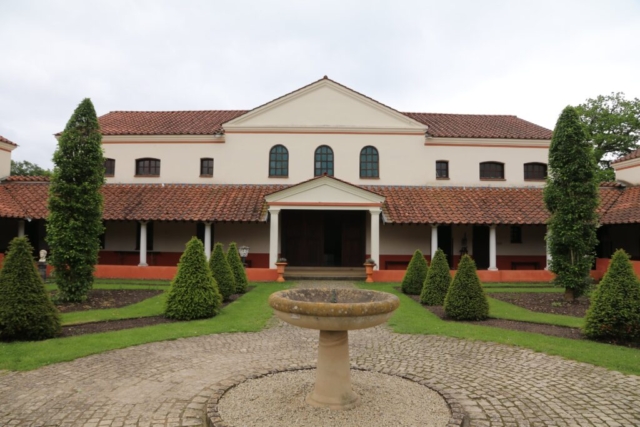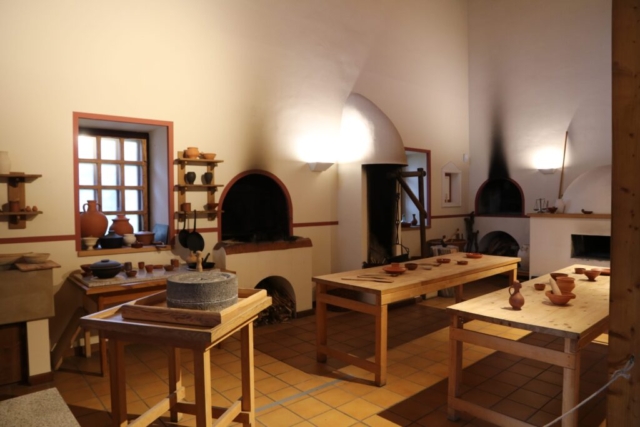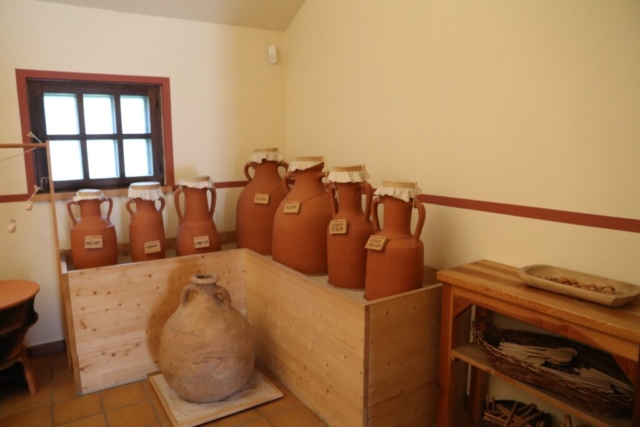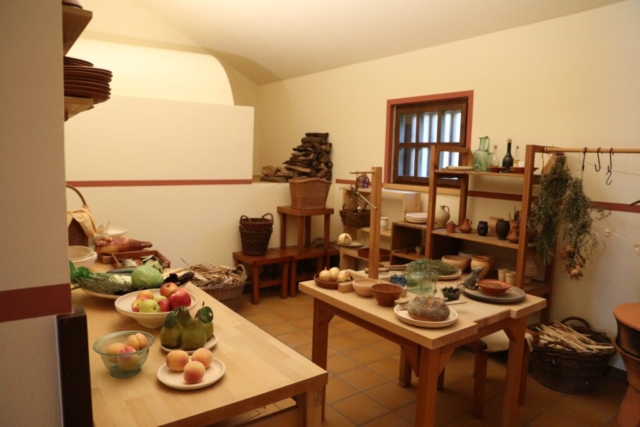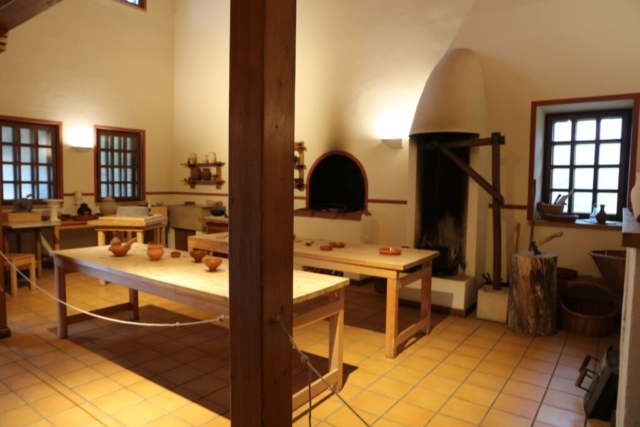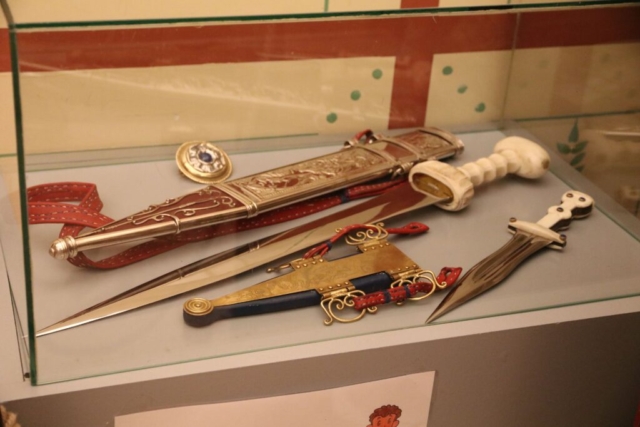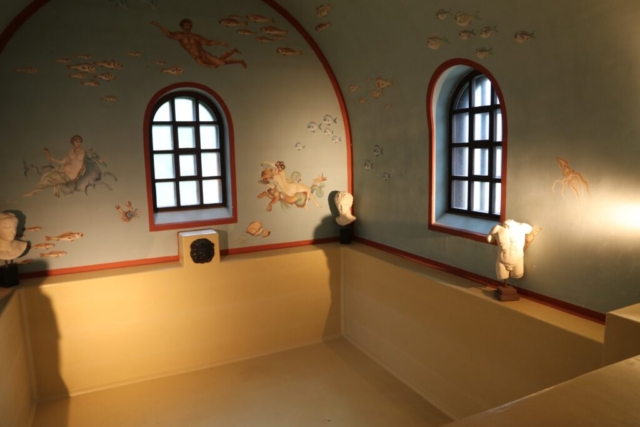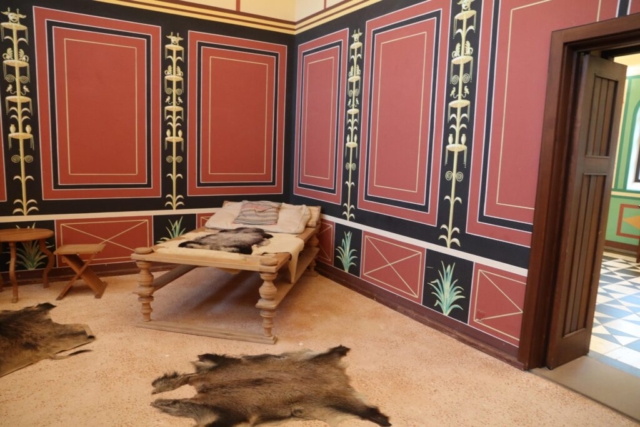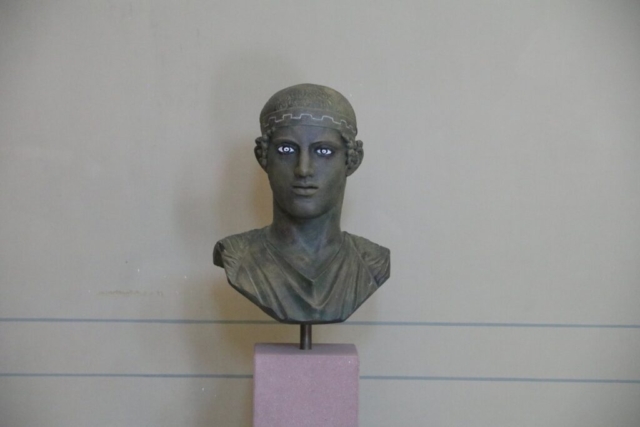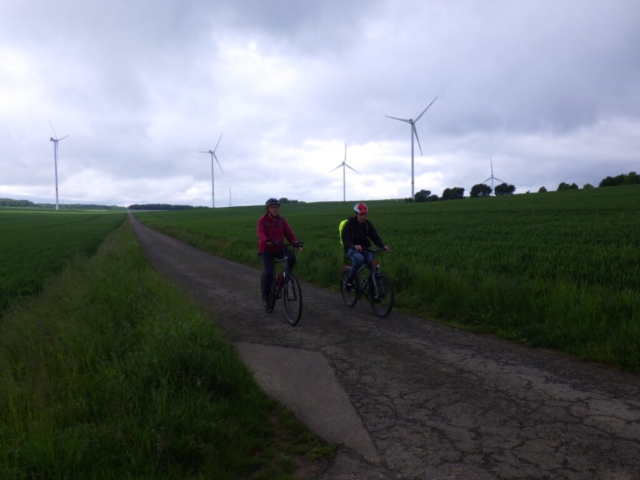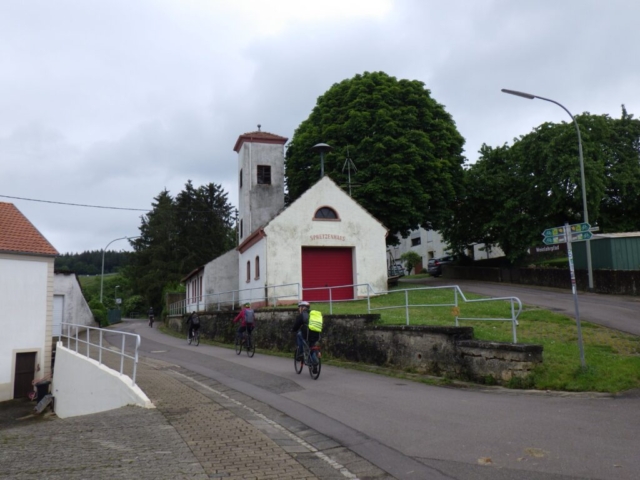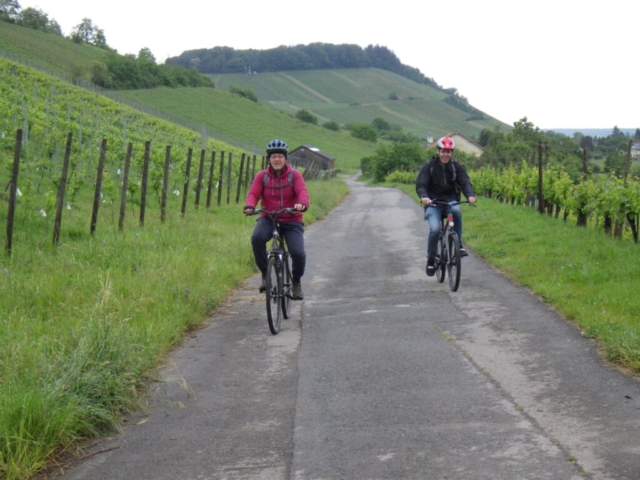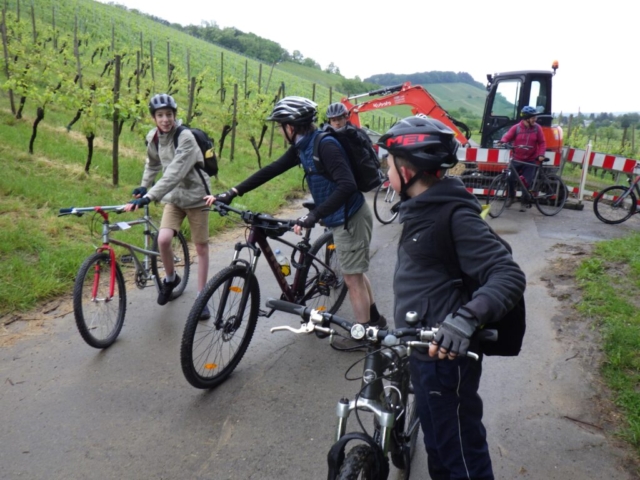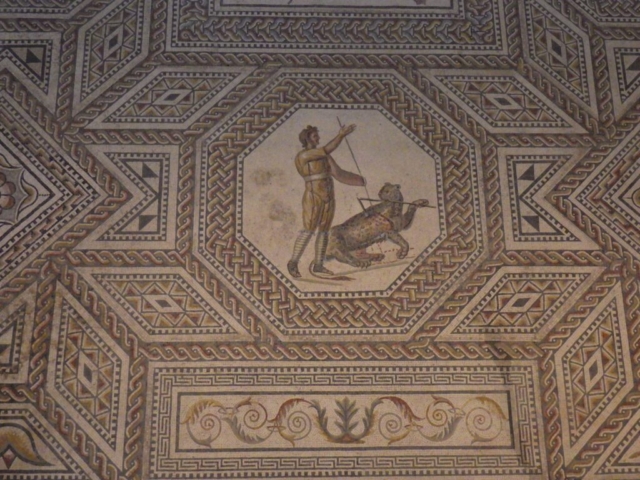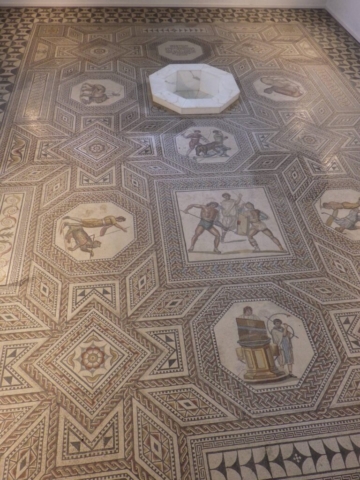On the cycle paths near the three borders (tripoint)
Eight young and not-so-young members of the Ad Pacem association met up on Saturday 18 May 2024 for their Bike for Climate in the car park next to the church in Elvange (L). Although it had rained on the previous days, it stayed dry for the entire 45km route. With overcast skies and ideal temperatures, it was a pleasure to pedal through fields, vineyards and villages. But when the cyclists arrived in Remerschen, on the promenade along the Moselle, they were surprised to have to pedal for several hundred metres on a track flooded with twenty centimetres of water from the overflowing Moselle.
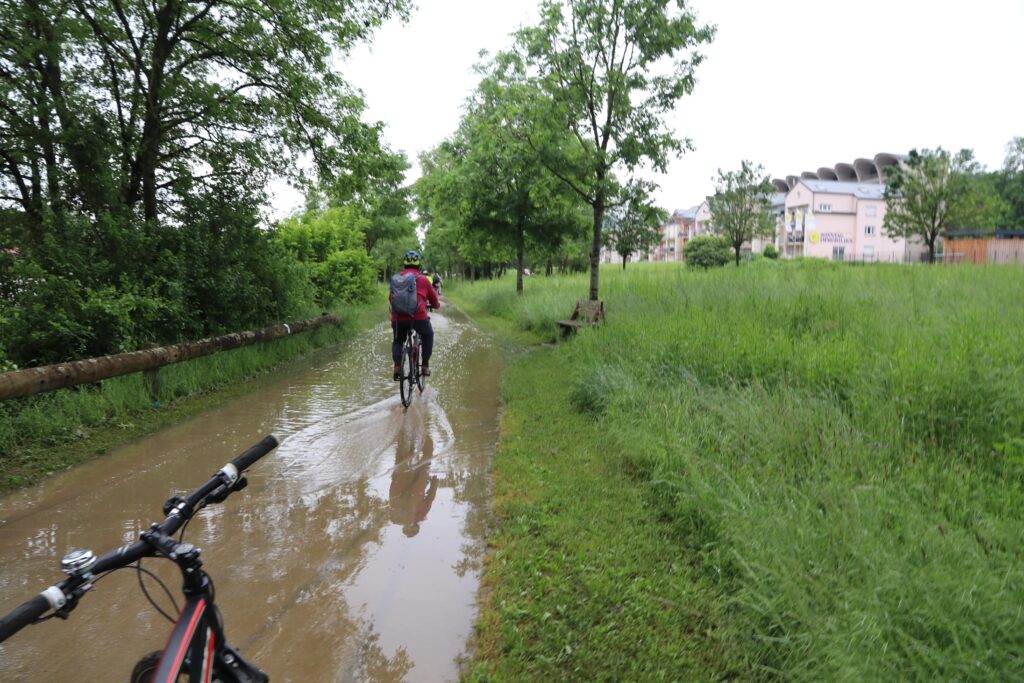
Schengen Museum
Our first stop was at the Schengen European Museum (L), which traces the progress of European integration and the establishment of the Schengen area of free movement from its earliest days. On 18 December 2007, the former Polish Minister of Foreign Affairs, Bronislaw Geremek, described this process in these words:
‘The abolition of the EU’s internal borders is a sign of recognition that all the citizens of the States concerned belong to the same area, and that they share a common identity’.
The museum’s permanent trilingual exhibition shows that the abolition of internal border controls represents an important step in the process of European integration. A 200 m2 exhibition area offers visitors a range of different themes, together with background information. Visitors can see the various customs and border symbols that characterised border posts between states before the creation of the EU. They were all abolished to allow free communication and movement between the different nations and populations of the EU.
Roman villa Borg
The cyclists then crossed the bridge over the Moselle to begin the long climb, on the German side, through the vineyards to the Roman Villa Borg near Nennig (D). On the way up, the cyclists passed a bunker that forms part of the Westwall built by the Nazis between 1939 and 1940. There are 75 bunkers along this 10.9 km stretch between the east of the town of Perl and the loop in the river Saar near the village of Orscholz.
Once they had reached the Roman villa, it was time for a lunch break and a packed lunch.
After lunch, it was time to visit the impressive villa. This complex has been completely rebuilt from its foundation walls. A visit to the residences of the Villa Borg gives an idea of the life of the privileged Romans two thousand years ago. The open-air museum with artefacts found during archaeological excavations, the villa’s magnificent baths, the harmonious gardens, the banqueting rooms, the gatehouse, the Roman kitchen and the Roman tavern invite you to linger a while.
Roman villa with the largest mosaic north of the Alps
After passing through more vineyards and woods, the next stop was the Roman villa near Nennig (D). It houses the largest mosaic from the Roman era north of the Alps.
The villa’s magnificent mosaic floor is one of the most important finds of its kind north of the Alps, and one of the few that can still be visited today at the original discovery site. Protected by a structure built around 150 years ago, the site is one of the oldest museum displays of archaeological finds in Germany.
The carefully structured mosaic spreads like a carpet over an imitation of black and white marble tiles. The mosaic was created at the beginning of the 3rd century A.D. It measures around 160 m2 on the floor and incorporates a well decorated with marble slabs. The mosaic was made using around 3 million small stones.
Just before visiting the mosaic, the group had stopped for a few moments in front of a mound forming a Roman burial complex dating from the 2nd century AD.
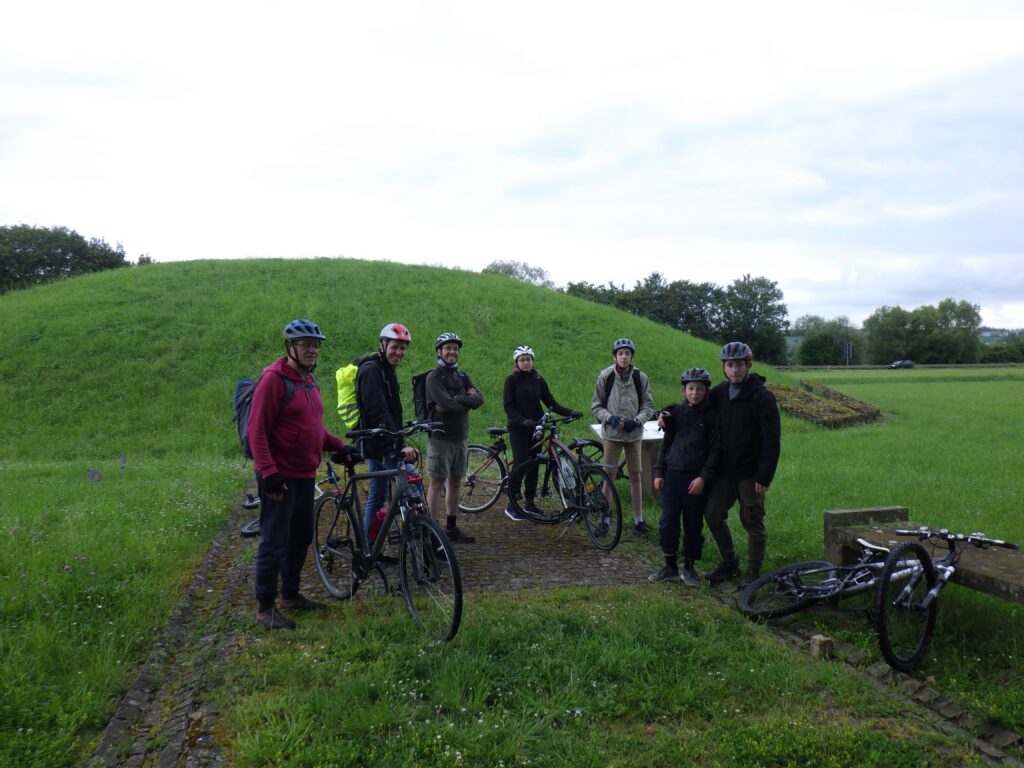
For the last 10km, the group was forced to make a slight diversions and take the main road. Heavy rain the previous day had caused a landslide that swept away several trees, completely blocking the way.
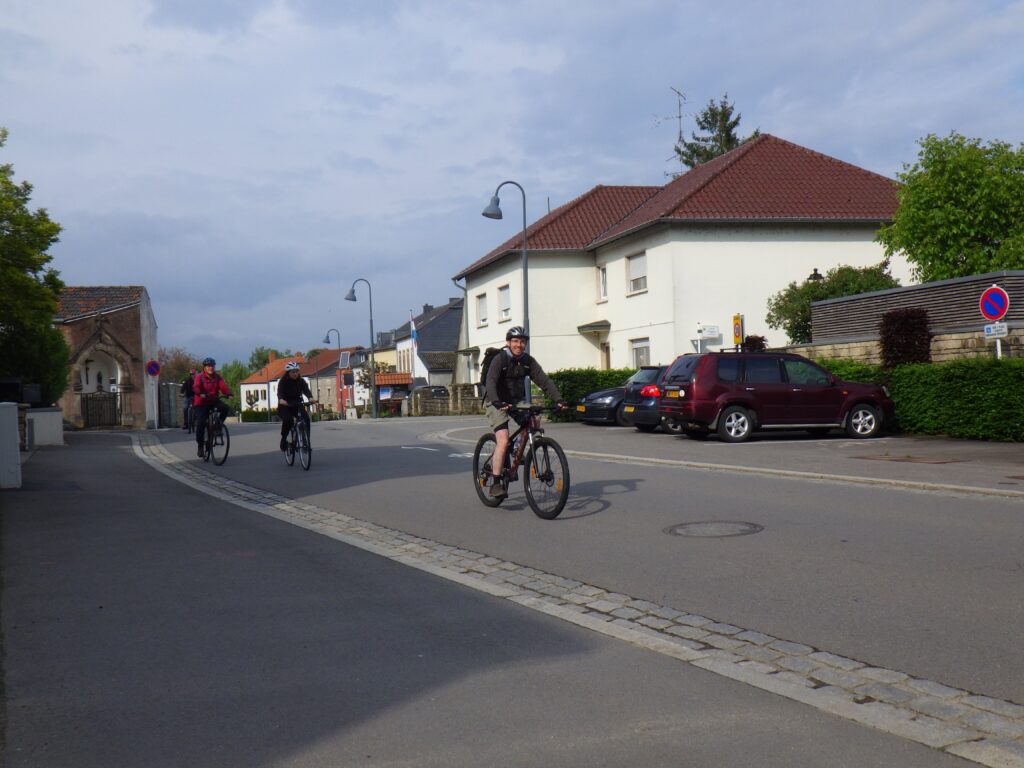
It was a very nice cycling trip to the ‘Luxembourg, France and Germany’ tripoint.
